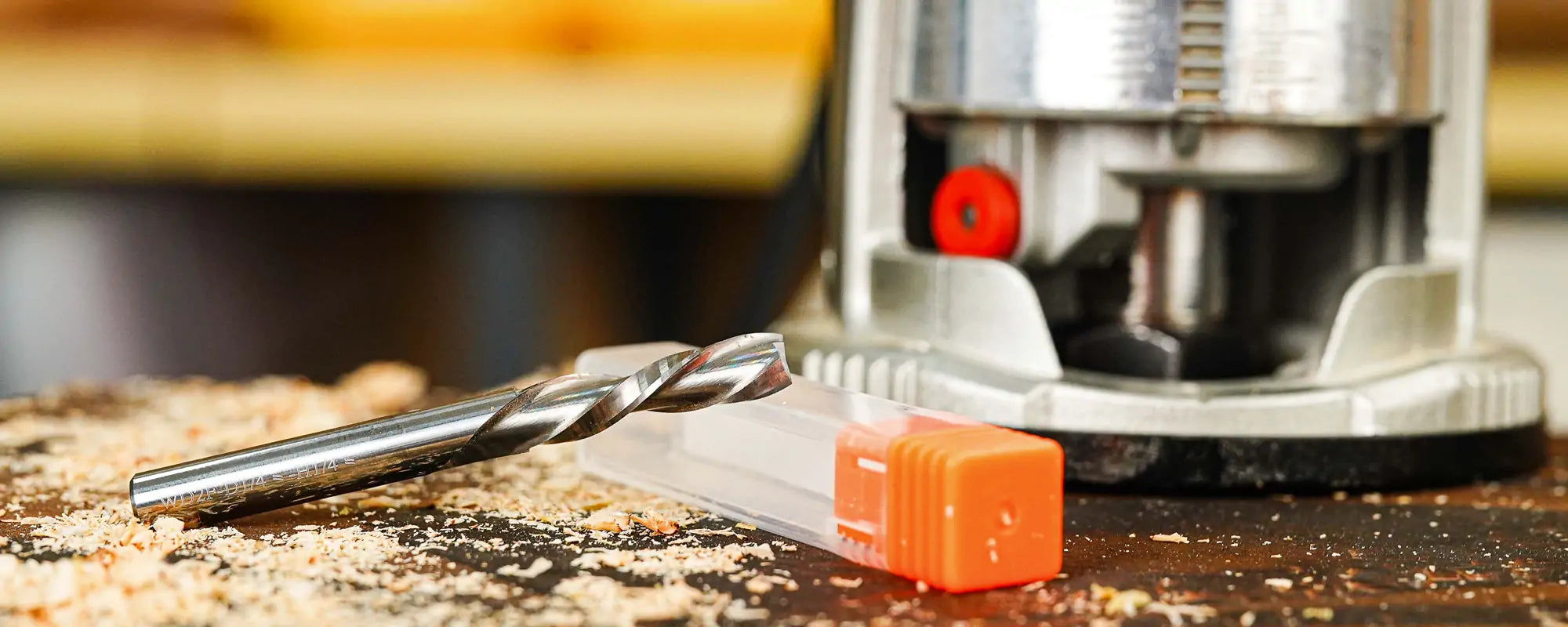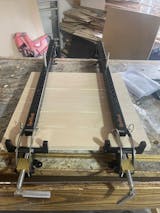Step 1: Understand Router Types
There are two primary woodworking router types:
-
Fixed-base Router: Ideal for edge profiling, dado cuts, and precise depths.
-
Plunge Router: Allows vertical plunging into the workpiece, perfect for mortises and intricate inlays.
For most beginners, a fixed-base router is easier to handle. As you gain confidence, consider adding a plunge router for enhanced versatility.
Step 2: Select the Right Router Bits
Router bits significantly affect the quality of your work. High-quality bits reduce tear-out, increase precision, and enhance safety.
-
Common Bit Types: Straight, flush-trim, chamfer, round-over, and dado bits.
-
Recommended Brands: Consider reputable brands like SpeTool Router Bits for reliable performance and value.
Step 3: Adjust Router Speed Appropriately
Router speed depends primarily on bit diameter:
| Bit Diameter | Recommended Speed |
|---|---|
| Under 1 inch | 22,000–24,000 RPM |
| 1–2 inches | 18,000–22,000 RPM |
| 2–3 inches | 12,000–16,000 RPM |
Always test your setup on scrap wood first to verify the finish and adjust accordingly.
Step 4: Install Your Router Bit Safely
Follow these steps to safely install a router bit:
-
Disconnect the router from power.
-
Insert the bit into the collet until bottomed out, then raise slightly (~1/8 inch).
-
Tighten the collet securely.
-
Reconnect the power and test on scrap material.
Step 5: Secure Your Workpiece
Use clamps, router mats, or bench dogs to firmly secure your material. Stability is crucial to precision and safety.
Step 6: Operate Your Router Safely
-
Always wear eye and ear protection.
-
Move the router in the correct direction: Counterclockwise around the edge (outside cuts) and clockwise for inside cuts.
-
Use shallow passes, especially with dense hardwood.
For a deeper understanding of cut direction, refer to this authoritative guide by Wood Magazine.
Essential Safety Gear
-
Safety glasses
-
Ear protection
-
Dust mask
-
Firm-fitting gloves (optional)
Common Mistakes to Avoid
-
Setting too deep a cut initially
-
Incorrect bit installation causing vibration
-
Poor material support causing movement
Quick Reference: Router Setup in 30 Seconds
-
Choose bit type and size.
-
Set router speed based on bit diameter.
-
Securely clamp your material.
-
Perform test cuts on scrap.
Next Steps
Ready to elevate your woodworking? Explore SpeTool Router Bits for precision-crafted bits designed to enhance your projects and performance.






